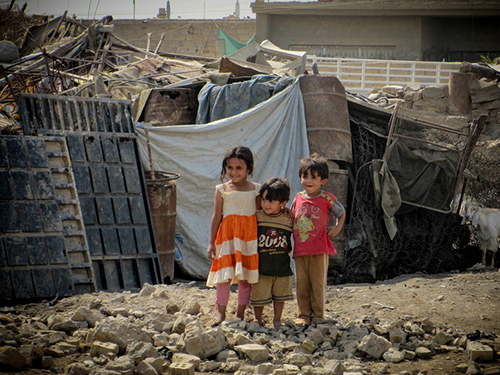Part 1: Lessons from a period of relative peace
 Iraq has been a nexus of fragility for the last three decades, and has experienced multiple types of conflict: internal insurgency, international war, sectarian strife, terrorism, internal fragmentation, and the spillover effects of conflict from other countries. As another crisis unfolds, does the recent past, marked by relative stability, hold any lessons for the future?
Iraq has been a nexus of fragility for the last three decades, and has experienced multiple types of conflict: internal insurgency, international war, sectarian strife, terrorism, internal fragmentation, and the spillover effects of conflict from other countries. As another crisis unfolds, does the recent past, marked by relative stability, hold any lessons for the future?
A new World Bank Group report, released today in Baghdad, provides the first in-depth analysis of Iraq’s economic and social development spanning the years 2007 to 2012, years that saw recovery in the oil sector, a massive scaling up of oil revenues, and extensive efforts by the Iraqi government to meet its people’s high expectations. The establishment of a civilian elected government in 2005/06 was followed by a period of strong economic growth and in time, relative stability that could have finally set the stage for inclusive growth.
Yet, strong economic growth has translated into very modest rates of poverty reduction. In 2012, a fifth of the Iraqi population was spending less than the amount required to meet their minimum nutritional requirements and cover their basic non-food needs, such as clothing and shelter. Many more lived close to the poverty line, vulnerable to increases in the price and availability of necessities, the loss of assets and livelihoods—precisely the type of disruption they are facing now.
Poverty was accompanied by deprivation in other aspects of Iraqis’ lives, too. Roughly half the country’s population of about 34 million has less than primary (elementary) level education; almost a third of children under 5 suffer from stunted growth; over 90 percent of households in Baghdad and central and southern governorates receive less than eight hours of electricity a day; a third of men and 90 percent of women (between the ages of 15 to 64), are neither employed nor looking for work; and more than 60 percent of the calories consumed by the poor come from a nationwide food subsidy program.
To a large extent, these statistics are the legacy of three decades of violence and of institutional weakness. This legacy is onerous and incredibly hard to overcome. Iraq suffers from a huge human capital and infrastructure deficit. Protracted violence and insecurity have directly affected male mortality rates; their adverse impact on health, basic services and infrastructure is also reflected in adult female mortality, which has been rising since the 1980s, and in the deterioration of infant mortality rates relative to the rest of the region (today, Iraq’s are the highest in the region, barring Yemen and possibly Djibouti).
The past also shapes the aspirations and potential of Iraq’s future—of its youth. Eighteen year-olds in Iraq today are only as likely to have completed primary school as Iraqis a full 30 years older than them; their rates of workforce participation are among the lowest in the region. Between 2003 and 2012, Iraq lost more than 100,000 civilians due to violence, and continued conflict in some parts of the country limited welfare gains and further fragmented the country.
The Iraqi state in 2006/07 faced daunting long-term challenges; sustaining progress towards development would have required a major effort—establishing the rule of law and good governance, reviving economic activity in the private sector, and initiating large-scale investments in infrastructure, education, health and social services, for a start.
These challenges, the limited instruments available to the state, and the pressure to show results, influenced the development strategy adopted by the state. A relatively myopic two-pronged policy was adopted to redistribute oil revenue: continuing the universal food subsidy system and expanding public sector employment and earnings. This left out certain parts of the country and certain groups of people, further weakening the relationship between citizens and the state while the major obstacles to development remained unchanged.
Today, Iraq faces yet another crisis, another wave of displacement and loss of income, livelihoods and assets—a further rupturing of its social and economic fabric. Today, more than ever, it is easy to recognize Iraq’s recent past as a window of opportunity that has been missed.
The future will hold even more difficult challenges. According to an ancient Sumerian proverb, “Whoever has walked with truth generates life”. Setting Iraq on an inclusive path to prosperity will require policy makers, the international community and the people of Iraq to face the truths of the past and learn from these to build a better future.



Join the Conversation